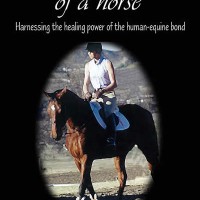At its core, cognitive-behavioral therapy encourages balanced thinking. Through examining our thought patterns, and sometimes through use of thought charts, we can identify characteristic ways of thinking that then lead to uncomfortable emotions.
Being able to tolerate both negative and positive emotions toward an object, or person is a hallmark of this type of therapy. However, this concept, referred to by some as having a bi-phasic personality, is also a core component of the development of object constancy.
In order to have object constancy, a child must be able to grasp the idea that when something is bad (like an inattentive mother), it is not bad or gone forever. Instead, when the child has achieved object constancy, he/she demonstrates the understanding that a mother can fail to meet his/her needs in one moment, and yet still be a constancy in his/her life, capable of meeting his/her needs.
Most clinicians are well aware that in cases of trauma, object constancy is challenged. This can sometimes be expressed as mistrust of others, and even in extreme cases, mistrust of the therapist. Should the therapist fail the client in some way, he/she may feel that the therapist can no longer be trusted.
Of course, the challenge is that all clinicians fail with clients at some point. Working through this failure can even be highly therapeutic. However, in the case of a fractured object constancy — and a client who feels that the client-therapist alliance is broken — this may not always be possible.
Here is where the recruitment of a medium, such as a horse, within the therapy for the client to attach or bond with can be helpful. Much like a transitional object, the client can develop a bond with the horse in which initially trust is built. In the beginning, the client may actually feel more connected and aligned with the horse than the clinician. As the therapy progresses, and the client finds that the therapist has done him/her no harm, and has actually offered help, trust between the client and the therapist can begin to develop.
Over time, the client can begin to transfer the trust that he/she has established with the horse — the transitional object — to the therapist.
The second step of this transition, which is a hallmark of psychoanalytic work, is then that as the therapeutic work moves forward, the client transfers the trust that is built with the therapist to the outside world.
While this generalization of trust, and the consequent alleviation of anxiety is what is always hoped for in any therapeutic environment, when the client’s object constancy is challenged by circumstances such as trauma, equine therapy can be invaluable.
Of course, the client may also just learn something from the horse.
Best,
Claire Dorotik LMFT
